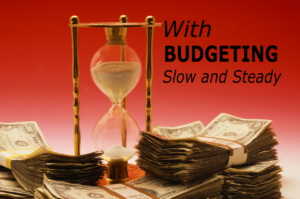 Budgets are like diets: No single approach works for everyone; overly complicated plans rarely work for long; and sometimes it takes a few tries before you get it right.
Budgets are like diets: No single approach works for everyone; overly complicated plans rarely work for long; and sometimes it takes a few tries before you get it right.
One common stumbling block is thinking of budgets as punishment rather than a means to achieve your life’s goals. Say you dream of buying a house: A budget shouldn’t serve as a constant reminder that you can’t afford a down payment; but rather, as a tool to help identify where the money goes each month so you can adjust spending – and saving – accordingly.
If you’re new to budgeting or you haven’t been successful in the past, start slowly. First, for a few months write down every cent you spend: mortgage/rent, utilities, food, gas, medical copayments, birthday presents, credit card interest, allowances – the works. Don’t forget annual expenses like insurance and income tax. It sounds tedious, but I guarantee you’ll be amazed by the bottom line.
At the same time, track your income. Comparing money coming in versus money going out can be quite enlightening. Breaking even or losing money each month may mean you need to find additional income sources and/or aggressively alter your spending habits.
Budgeting tools. You can go the pencil-and-paper route by downloading a budget template (Google “Budget Worksheet”). Interactive, online budgeting calculators to help plan for expenses also are widely available. Practical Money Skills for Life, a free personal financial management program run by Visa Inc., includes budgeting calculators for everything from back-to-school costs to holiday expenses to retirement (www.practicalmoneyskills.com/calculators).
Once you’re ready for the next level, many software packages and online account management services are available – some are free, while others charge a one-time or monthly fee. Popular products include Quicken, Mint.com, Yodlee and Mvelopes.
Commonly available features include:
- Account aggregation – import transaction information and balances from bank, credit card and investment and other accounts into one common database.
- Transfer money between accounts; some also allow online bill payment.
- Track, categorize and annotate transactions – also helpful when calculating income taxes.
- Interactive charts and graphs to help visualize changes in spending and savings habits.

Start jotting down your short- and long-term financial goals – buying a new car or house, saving for retirement and vacations, paying off debt, financing college, building an emergency fund, etc. You won’t solve all these financial challenges at once, but start whittling away at them; over time you’ll notice gradual improvements and be encouraged to up the ante.
Here are a few suggestions:
- Look for items that stand out as extravagances you can trim or eliminate, at least temporarily.
- Reduce insurance premiums by raising deductibles.
- Always pay at least minimum loan and credit card balances to avoid late charges.
- List accounts by interest rate and pay off those with the highest rates first.
- Create separate savings accounts for different long-term goals and have contributions automatically deducted from your paycheck or checking account – even if it’s only a small amount each month. Don’t borrow from one to pay expenses in another, especially your retirement accounts – the tax implications alone are daunting.
For more budgeting tips, visit www.mymoney.gov , the National Foundation for Credit Counseling (www.nfcc.org) and Practical Money Skills for Life (www.practicalmoneyskills.com).
When budgeting – like dieting – remember the tortoise and the hare: Slow and steady wins the race.
Jason Alderman directs Visa’s financial education programs. To Follow Jason Alderman on Twitter: www.twitter.com/PracticalMoney

